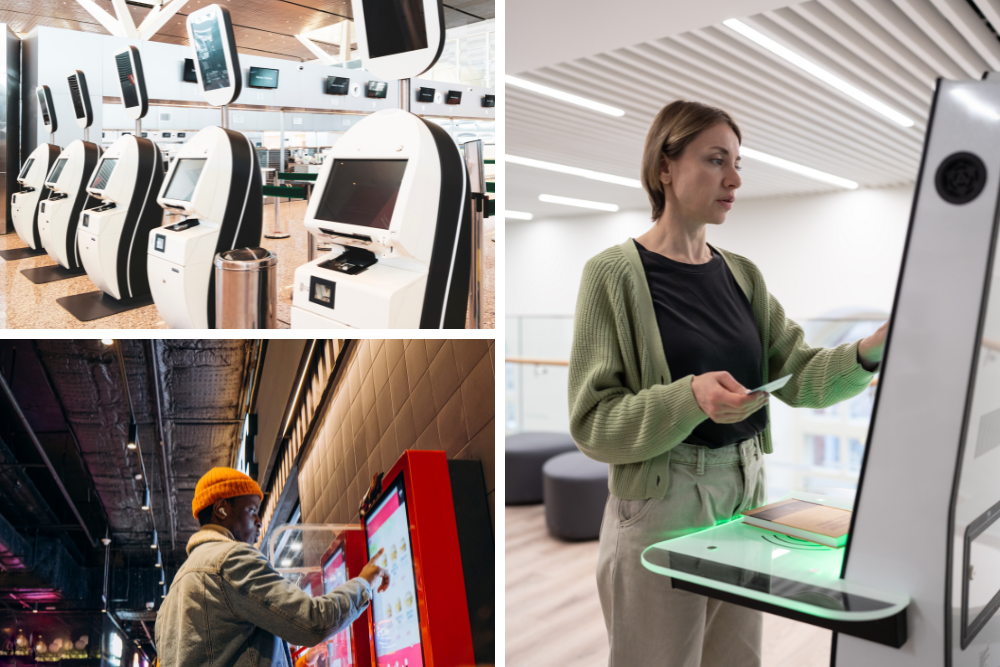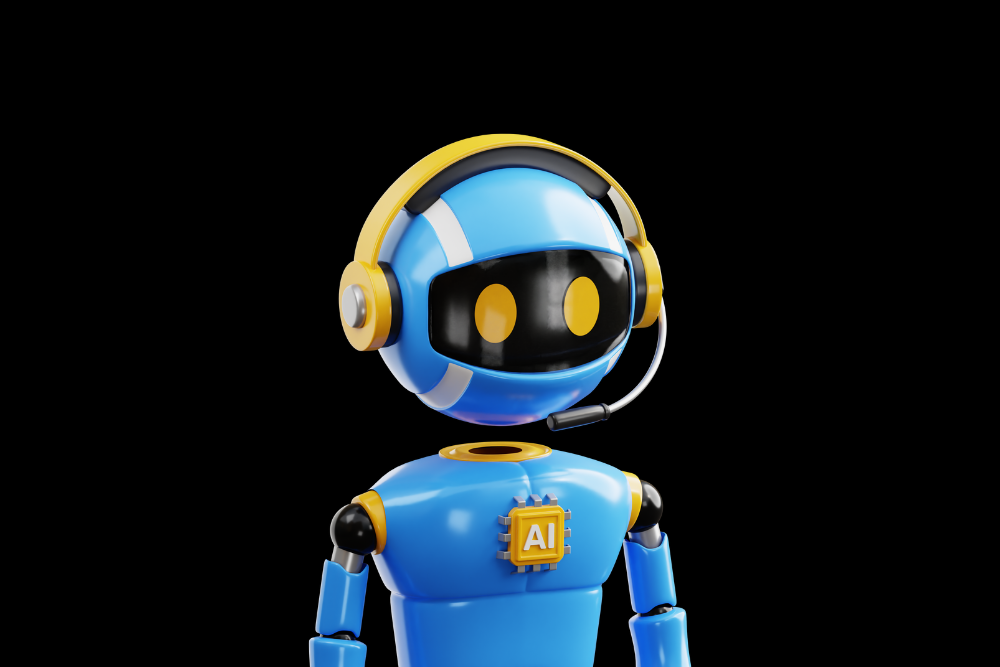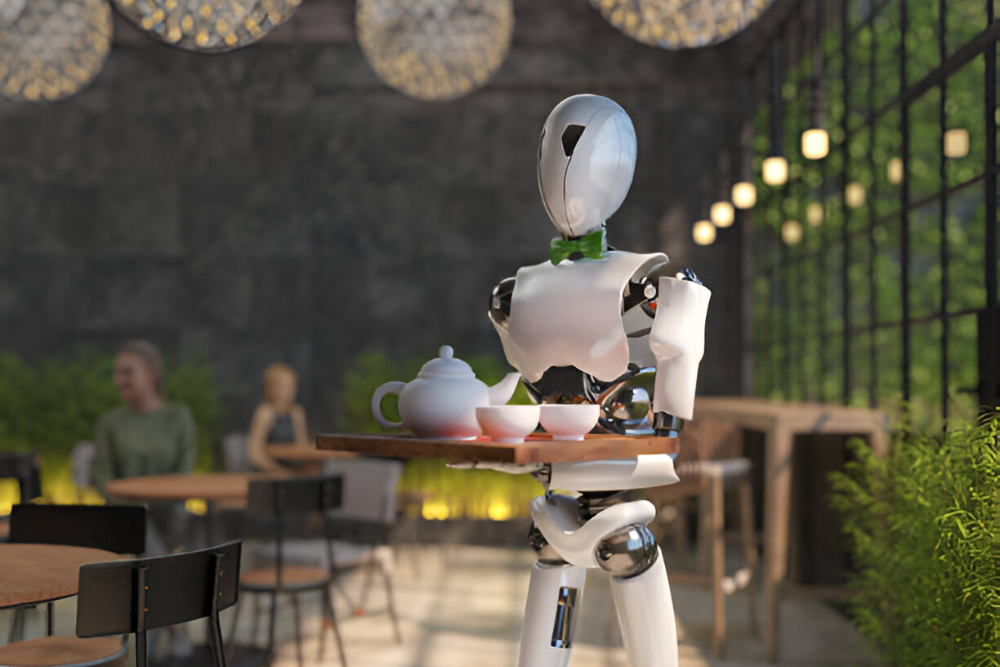Restaurant automation is transforming the food service industry. Automation is making a big impact by streamlining tasks like ordering and payment, managing inventory, and supply chains. Customers get a more personalized and efficient dining experience with features like digital menu recommendations and smart ordering. Meanwhile, staff can concentrate on excellent service, thanks to automated systems that handle the background tasks accurately and efficiently.
Restaurant automation offers more than just a better customer experience. It leads to cost savings through lower labor needs and better inventory management. Automation also boosts safety, sustainability, and competitiveness, resulting in higher profits and long-term success for restaurants.
Automation is becoming essential as the restaurant industry changes, not just a luxury. Using the latest technology, owners can stay ahead, improve their operations, and offer an unmatched dining experience that keeps customers returning.
What Is Restaurant Automation?
Restaurant automation uses technology to streamline operations, making them more efficient and cost-effective. It also enhances the customer experience. This approach includes various technologies for the Front of House (FoH), Back of House (BoH), and Delivery.
Definition and Overview
Restaurant automation automates tasks and processes to boost efficiency and cut labor costs. It focuses on improving customer service, managing the kitchen and inventory, and streamlining delivery services. The aim is to make restaurants more efficient and customer service better.
Key Components and Types
- Front of House (FoH) Automation: This area deals with customer-facing tasks like order management, customer service, and payment handling.
- Back of House (BoH) Automation: It focuses on the kitchen, inventory, and staff management to increase efficiency and reduce mistakes. This includes kitchen automation, inventory systems, and staff management tools.
- Delivery Automation: This area aims to improve the efficiency and accuracy of delivering orders to customers, for both in-house and third-party services. It includes online ordering and automated delivery solutions.
Companies like McDonald’s, Chipotle, and Panera Bread are at the forefront of restaurant automation. They’re using robotics, self-service kiosks, and AI for voice ordering. This is changing the future of the restaurant industry towards automation.
Benefits of Restaurant Automation
Restaurant automation brings a host of benefits that could transform the industry. It enhances efficiency, productivity, and customer experience, making it a compelling choice for businesses. The advantages of adopting automation are vast and significant.
Increased Efficiency and Productivity
Automated systems streamline tasks like order processing, inventory management, and payment handling. This leads to shorter wait times, quicker order fulfillment, and smarter resource use. As a result, productivity increases. Automated kitchen systems, for example, cut down on time and food waste, making operations more efficient and cost-effective.
Cost Savings and Profitability
Automation also leads to notable cost savings. It reduces labor costs, minimizes errors, and optimizes inventory and supply chain management. This can significantly boost a restaurant’s profitability. Industry figures suggest that no-shows cost the hospitality sector about £17.59 billion yearly. Automated reservation and waitlist systems can help reduce this, enhancing profitability.
Enhanced Customer Experience
Automation improves the customer experience in restaurants too. Features like online ordering, self-service kiosks, and easy payment options boost customer satisfaction and loyalty. A study revealed that 70% of customers like using QR codes for menus, and 78% of millennials find it attractive. Automated reservation and waitlist management also reduce customer frustration, making dining more enjoyable.
By harnessing restaurant automation, businesses can enter a new era of efficiency, cost savings, and customer satisfaction. This leads to growth and profitability in the competitive food service industry.
Front-of-House Automation
The restaurant industry is rapidly adopting front-of-house automation to boost customer experiences and enhance operational efficiency. This shift includes the use of online ordering and delivery platforms, self-service kiosks, and tableside tablets. These technologies are revolutionizing how customers engage with restaurants.
Online Ordering and Delivery Platforms
Online ordering and delivery platforms enable customers to order and pay directly through the restaurant’s website or app. This reduces staff workload and boosts convenience. These platforms integrate smoothly with management systems, making order processing and delivery more efficient.
Self-Service Kiosks and Tableside Tablets

Self-service kiosks let customers view menus, place orders, and make payments without server help. Tableside tablets allow customers to order, request refills, and pay at their table, enhancing their dining experience. These technologies not only boost efficiency but also give customers more control over their meals.
The push for front-of-house automation comes from the need to cut labor costs, which make up about 32% of a restaurant’s expenses. Automating customer-facing tasks helps restaurants manage staff better, improve order accuracy, and speed up payments. This leads to substantial cost savings.
| Automation Technology | Key Benefits |
|---|---|
| Online Ordering and Delivery Platforms |
|
| Self-Service Kiosks |
|
| Tableside Tablets |
|
By embracing front-of-house automation, restaurants can look forward to greater efficiency, cost savings, and higher customer satisfaction. This positions them for success in the competitive restaurant market.
Back-of-House Automation
In the restaurant industry, automation is reshaping back-of-house (BoH) operations. Efficiency and precision are crucial here. BoH automation is making restaurants more efficient, reducing errors, and increasing profitability.
Inventory and Supply Chain Management
Automated inventory and supply chain management systems are changing how restaurants manage their ingredients. They use real-time data to track stock levels, automatically place orders, and prevent stockouts. This automation helps reduce waste, optimize inventory, and keep the supply chain smooth.
Kitchen Display Systems (KDS)
Kitchen display systems (KDS) are now essential in modern kitchens. They show real-time order information to kitchen staff, improving order accuracy and workflow. With KDS, orders are instantly visible, lowering error rates and ensuring dishes are served promptly.
Recipe and Menu Management
Automated recipe and menu management software is a key tool in back-of-house automation. It standardizes recipes for consistent menu quality and provides detailed nutrition, cost, and pricing information. This approach helps restaurants make informed decisions, optimize menus, and stay competitive.
| Feature | Benefit |
|---|---|
| Automated Inventory Tracking | Reduced waste, optimized stock levels, and seamless supply chain management |
| Real-Time Kitchen Display Systems | Improved order accuracy, enhanced workflow, and faster service |
| Automated Recipe and Menu Management | Consistent menu quality, data-driven decision-making, and competitive pricing |
The restaurant industry is increasingly adopting back-of-house automation. This leads to more efficiency, cost savings, and a better customer experience. By using these tools, restaurants can streamline operations and focus on delivering outstanding service and culinary experiences.
Restaurant Automation
Restaurant automation brings numerous applications and use cases that streamline operations, enhance customer experiences, and boost profitability. It includes online ordering, self-service kiosks, inventory management, and kitchen automation. These technologies revolutionize how restaurants manage daily tasks.
Key Applications and Use Cases
- Online Ordering and Delivery Platforms: Customers can easily place orders and get them delivered, making things more convenient and reducing wait times.
- Self-Service Kiosks and Tableside Tablets: Customers can look at menus, order, and pay at their speed, enhancing their in-restaurant experience.
- Inventory and Supply Chain Management: Automates inventory tracking, ordering, and forecasting to cut down on waste and keep stock levels optimal.
- Kitchen Display Systems (KDS): Replaces traditional paper tickets with digital displays, improving order accuracy and speed.
- Recipe and Menu Management: Automates creating, updating, and analyzing menu items, making it easier to optimize for profitability and customer preferences.
Integrating Automation with Existing Systems
Effective restaurant automation means seamlessly integrating with systems like point-of-sale (POS), accounting software, and customer relationship management (CRM) tools. This integration leads to a unified, data-driven approach to managing operations. It results in increased efficiency, cost savings, and better decision-making.
| Automation Application | Integration with Existing Systems | Benefits |
|---|---|---|
| Online Ordering and Delivery | POS, CRM, Accounting | Increases sales, improves customer experience, streamlines order processing |
| Self-Service Kiosks and Tablets | POS, CRM | Makes order fulfillment faster, reduces labor costs, and improves customer engagement |
| Inventory Management | Accounting, Supply Chain | Reduces waste, improves forecasting, optimizes purchasing |
| Kitchen Display Systems (KDS) | POS, Inventory | Increases efficiency, reduces errors, enhances food quality |
| Recipe and Menu Management | POS, Accounting, CRM | Optimizes profitability, uses data for menu engineering, improves customer satisfaction |
By integrating restaurant automation with existing systems, restaurants can manage their operations smoothly and efficiently. This leads to increased efficiency, cost savings, and better decision-making.
Challenges and Considerations
The benefits of restaurant automation are clear, yet establishments face several hurdles. The high initial costs of automation technologies demand meticulous planning and budgeting. Ensuring staff are well-trained is crucial for the success of automation, as their acceptance is paramount.
Data security and privacy are major concerns with automation. Handling customer data, including financial and personal details, requires stringent security protocols. Restaurants must adhere to data privacy laws to safeguard customer trust.
Initial Investment and Implementation
Switching to automated systems can be costly. Restaurants must weigh the expenses of hardware, software, installation, and maintenance against their financial plans and future goals. A well-thought-out approach to implementation can help manage costs and ease the transition.
Staff Training and Adoption
- Employees might be hesitant about automation due to job security or system complexity concerns.
- Extensive training is vital to ensure staff are adept at using automated technologies.
- Open communication and addressing employee worries are key to smooth automation adoption.
Data Security and Privacy
- Restaurants must adhere to data privacy laws, like GDPR and CCPA, to protect customer data.
- Strong cybersecurity, including encryption and regular updates, is crucial to prevent data breaches.
- Transparency about data practices helps build trust with customers.
| Challenges of Restaurant Automation | Considerations for Restaurants |
|---|---|
| Initial Investment and Implementation | Carefully evaluate the costs and plan a phased approach |
| Staff Training and Adoption | Comprehensive training programs and fostering a culture of innovation |
| Data Security and Privacy | Compliance with data privacy regulations and implementing robust cybersecurity measures |
The Role of AI in Restaurant Automation

Artificial intelligence (AI) is transforming restaurant automation significantly. It enables AI-powered personalized customer experiences by analyzing data from various sources. This includes online orders, reservations, and loyalty programs. By doing so, it tailors recommendations, offers, and communications to each customer, enhancing the dining experience.
AI-driven predictive analytics also play a key role in optimizing menus. They identify customer preferences, trends, and sales patterns. This knowledge helps restaurants make informed decisions on menu items, pricing, and inventory. Consequently, it boosts profitability and streamlines AI in restaurant automation.
Personalized Customer Experiences
AI systems create detailed profiles of customers based on their data. This allows for customized promotions, offers, and menu suggestions. AI chatbots provide quick answers and personalized menu tips, enhancing customer satisfaction.
Predictive Analytics and Menu Optimization
AI analytics analyze sales, customer feedback, social media, and weather to guide strategic decisions. They highlight top menu items, track customer habits, and forecast market trends. This data aids in optimizing menus and inventory, cutting down on waste, and boosting profits.
Real-World Examples and Success Stories
Restaurants across the spectrum have leveraged automation to refine their processes and elevate the dining experience. Sweetgreen, a fast-casual chain, stands out by integrating online ordering, self-service kiosks, and a mobile app. This approach ensures a smooth and efficient experience for patrons.
Applebee’s has also made strides by introducing tableside tablets. These devices enable customers to place orders, settle bills, and engage in games independently. This innovation has significantly cut down on wait times and enhanced efficiency.
These instances highlight the profound effects of automation on operational efficiency, cost reduction, and customer satisfaction. Let’s delve deeper into these success stories:
AI-Driven Voice Ordering in Drive-Thrus
- 95% of orders were handled by the AI system.
- Wait times were reduced by more than 2 minutes during busy periods.
- Order accuracy improved to over 97%.
Personalized Online Ordering with AI
- Online sales increased by 15% after implementing the AI system.
- 83% of customers agreed that the personalized suggestions were accurate.
- Customer satisfaction scores improved from 4.2 to 4.7 out of 5.
Streamlining Operations with AI
- Rosie’s Family Restaurant reduced food waste by 63%, saving approximately $750 per week.
- They spent 27% less on supplies due to smarter ordering with the AI system.
- Rush orders decreased to just 8% after implementing the inventory management AI.
These narratives underscore the tangible advantages of restaurant automation. They showcase enhancements in efficiency, cost reduction, and customer satisfaction. As technology advances, we anticipate more groundbreaking solutions that will redefine the restaurant landscape.
Future Trends and Innovations

The restaurant industry is on the cusp of significant changes, with automation leading the charge. Experts foresee a surge in the adoption of AI-powered virtual assistants, robot chefs, and autonomous delivery solutions. These technologies will reshape the industry in the coming years.
Restaurants will tap into advanced data analytics to uncover deeper customer preferences. This will enable them to refine their operations for better efficiency. The integration of IoT and blockchain will also drive innovation in inventory management, supply chain traceability, and energy efficiency.
As stakeholders embrace future trends in restaurant automation, the industry is set for unprecedented levels of automation and efficiency. This will also enhance customer-centricity.
Automated Food Preparation and Delivery
- Innovative pizza-making machines capable of crafting 100 pizzas per hour
- Robotic servers, such as BellaBot’s cat-faced bots, transform customer service
- Robotic delivery systems gaining popularity to handle the growing demand for efficient delivery services
AI-Powered Optimization and Personalization
- AI integration in POS systems led to a 15% increase in sales efficiency and a 10% reduction in food waste
- Self-service kiosks reduce customer wait times by 25% and increase customer satisfaction by 30%
- Personalized digital marketing campaigns resulting in a 20% increase in customer retention and a 15% growth in off-peak hour sales
Integrated Technology Solutions
| Technology | Impact |
|---|---|
| Comprehensive management software | 25% reduction in operational costs and 30% improvement in overall efficiency |
| Green technology implementation | 10% reduction in energy costs and 15% increase in customer loyalty |
| Contactless payment methods | Safer transactions and growing adoption among customers |
| In-house delivery apps | Reduced commission fees and more control over the customer experience |
The restaurant industry is set to see a significant transformation with these cutting-edge technologies. The future of restaurant automation holds promise for greater efficiency, innovation, and a focus on the customer.
Conclusion
The advent of restaurant automation is set to transform the food service sector profoundly. It promises to enhance efficiency, cut costs, and elevate the customer experience. By leveraging advanced technologies in both front and back-of-house operations, eateries can simplify their workflows, minimize mistakes, and empower staff to excel in customer service.
As the industry advances, the role of automation technologies, especially those powered by AI, will grow in importance. Restaurants aiming to remain competitive must adapt to these changes to meet their customers’ evolving needs. Although the upfront costs and challenges of automation may seem daunting, the long-term advantages make it a strategic investment for food service enterprises of every size.
With a majority of consumers still confident in dining out despite the Omicron variant, and over 80% of clients seeking tailored kitchen automation solutions, the restaurant industry is on the cusp of a technological breakthrough. By harnessing the potential of restaurant automation, businesses can secure their place in the future landscape.
FAQ’s
What is restaurant automation?
Restaurant automation uses advanced technology to improve various restaurant operations. It covers front-of-house, back-of-house, and delivery processes. This approach aims to make these operations more efficient and effective.
What are the key components of restaurant automation?
Restaurant automation encompasses three main areas: Front of House (FoH), Back of House (BoH), and Delivery. FoH focuses on customer-facing tasks. BoH deals with the kitchen and inventory. Delivery automation boosts the efficiency and precision of order delivery.
What are the benefits of restaurant automation?
Automation in restaurants offers numerous advantages. It increases efficiency and productivity, cuts costs, and improves customer satisfaction. Automated systems simplify tasks, lower labor expenses, and enhance the dining experience.
How does front-of-house automation work?
Front-of-house automation includes online ordering and delivery platforms, self-service kiosks, and tableside tablets. These technologies make dining more convenient, ease staff workload, and improve customer satisfaction.
What are the key applications of back-of-house automation?
Back-of-house automation focuses on inventory management, kitchen display systems (KDS), and recipe and menu management. These technologies enhance efficiency, minimize errors, and support data-driven decisions in the kitchen and operations.
What are the challenges and considerations of restaurant automation?
Automation faces challenges like high initial costs, staff training, and data security concerns. Restaurants must plan and budget carefully to ensure successful automation implementation.
How does artificial intelligence (AI) enhance restaurant automation?
AI technologies offer personalized customer experiences, optimize menus and pricing with data analytics, and use predictive insights to improve operations and decision-making.
Can you provide real-world examples of successful restaurant automation implementations?
Yes, restaurants like Sweetgreen and Applebee’s have leveraged automation technologies. They use online ordering, self-service kiosks, and tableside tablets to streamline operations and enhance customer satisfaction.
What are the future trends and innovations in restaurant automation?
Future trends include the rise of AI-powered virtual assistants, robot chefs, and autonomous delivery solutions. The integration of IoT and blockchain will further enhance restaurant automation and operations.
